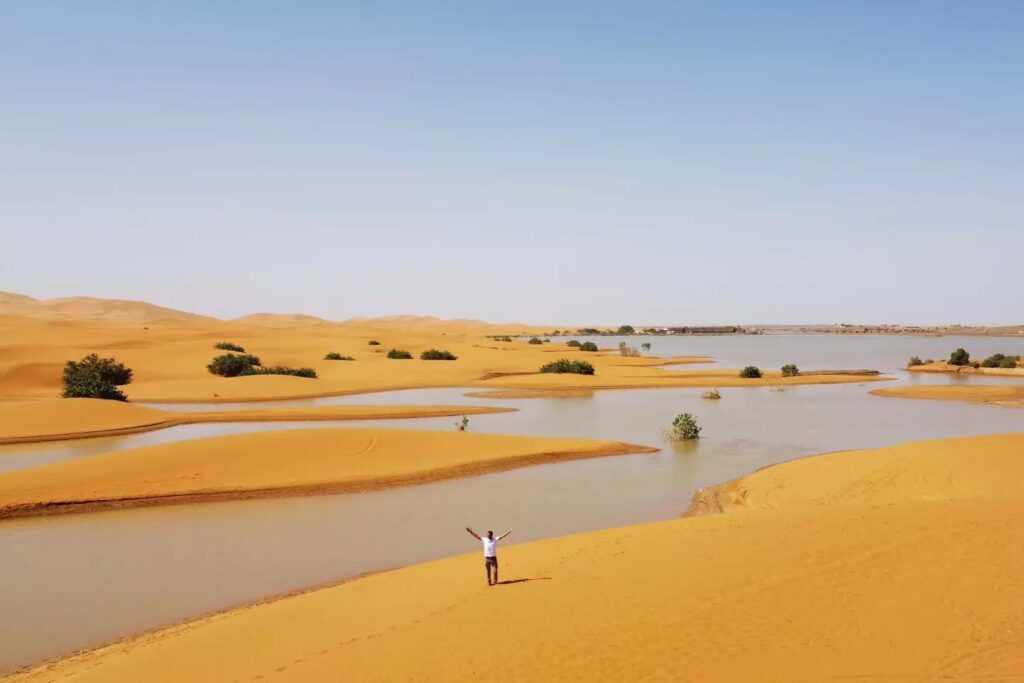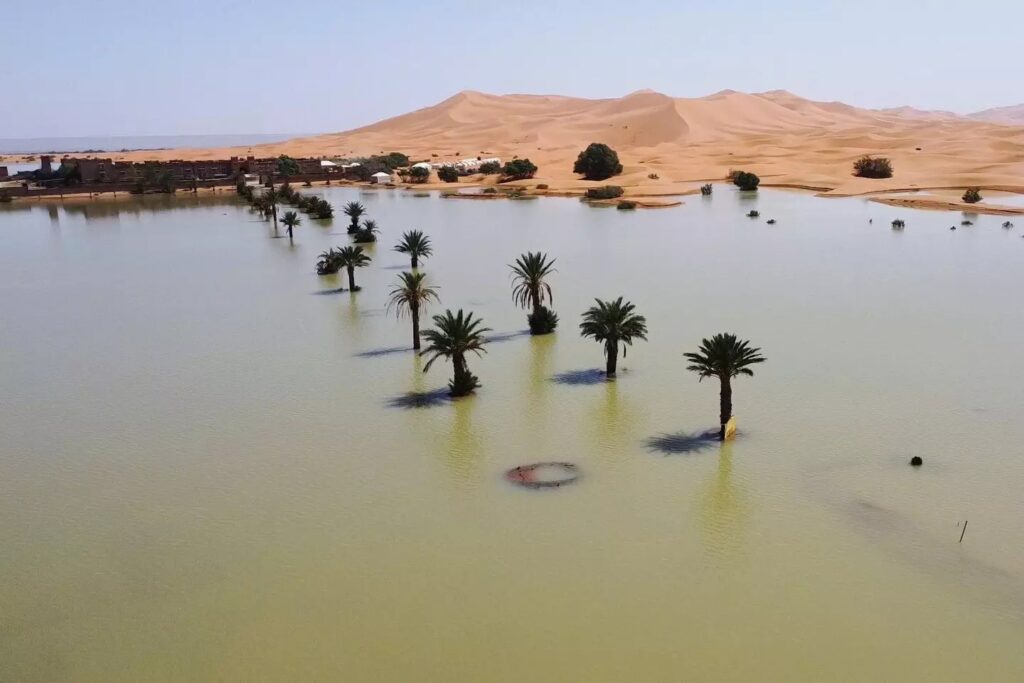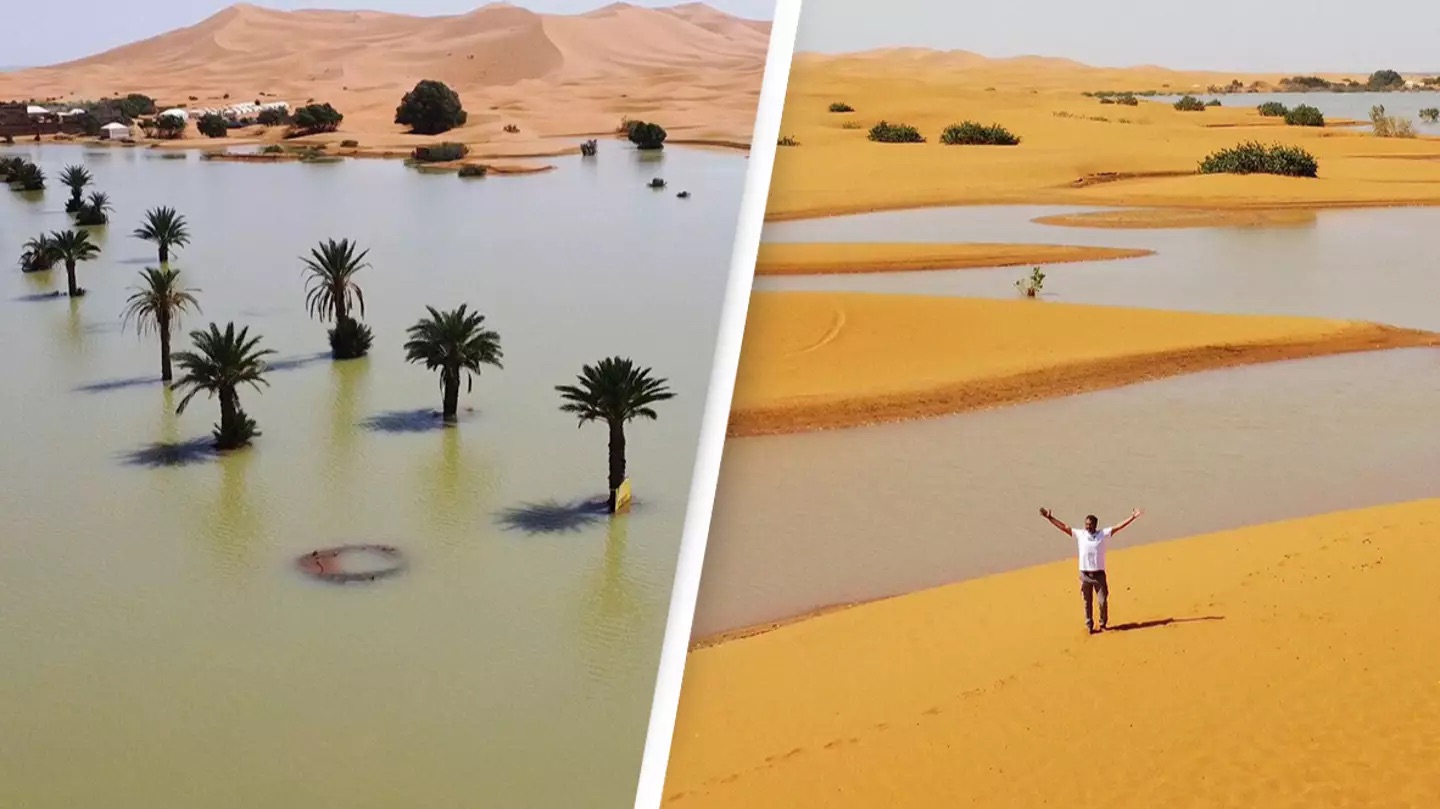Despite being one of the driest regions on Earth, the Sahara Desert recently experienced an extraordinary surge of rainfall, leaving parts of the arid landscape temporarily submerged. New images reveal that southeast Morocco, in particular, received more water than it has in decades, with pools of water forming between the desert’s iconic palm trees.
According to Moroccan government data, the unexpected rainfall occurred over two days in September, surpassing annual averages in several areas. Typically, these regions receive less than 250 millimeters (10 inches) of rain each year. One of the hardest-hit locations was the village of Tagounite, situated about 280 miles south of Rabat, which saw more than 100 millimeters (3.9 inches) of rain in just 24 hours—over a third of its yearly total.

Houssine Youabeb of Morocco’s General Directorate of Meteorology told the Associated Press, “It’s been 30 to 50 years since we’ve experienced this much rain in such a short time.” NASA satellite images captured water flowing into the long-dry bed of Lake Iriqui, which hadn’t held water in 50 years. The images also showed vehicles navigating the newly formed pools in the desert.
Though rare, this rainfall is expected to bring some benefits, including the replenishment of groundwater aquifers that are vital for desert communities. Some reservoirs in the region were refilled, though it’s uncertain whether this will be enough to mitigate future droughts.

Unfortunately, the heavy rains also brought devastation. Over 20 people lost their lives in flash floods that swept through both Morocco and Algeria. In Morocco, officials reported 18 fatalities in rural areas, along with 56 homes destroyed. Essential infrastructure, including water systems, roads, and electricity, was also severely damaged, prompting the government to release emergency relief funds.
These floods came as Morocco was still recovering from a catastrophic earthquake last year, which claimed nearly 3,000 lives, primarily in the High Atlas mountains in central Morocco.
